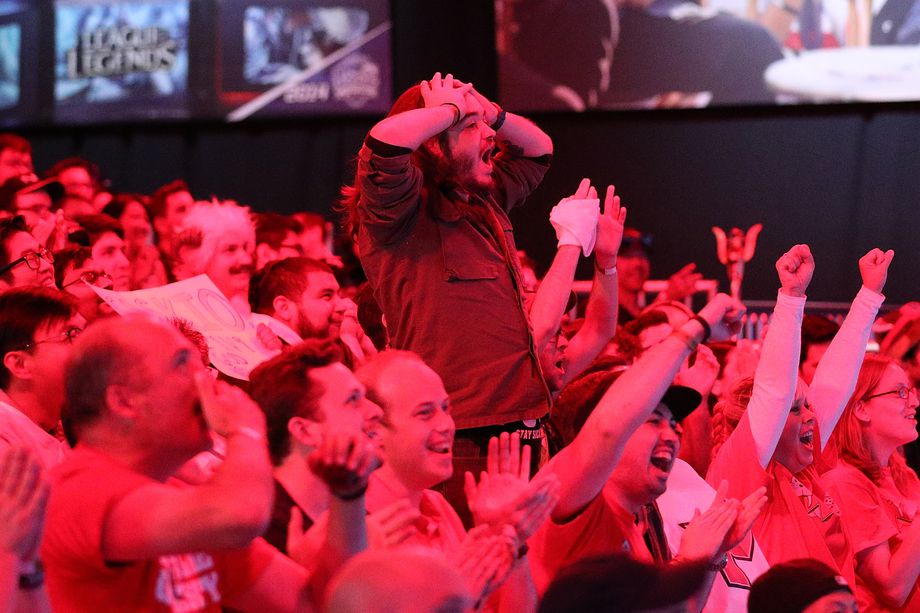
Why are so many esports event sponsorships by energy drinks, snack foods?
The Nielsen Company says it doesn’t have to be that way
/cdn.vox-cdn.com/uploads/chorus_image/image/56977237/689553094.0.jpg)
The Nielsen Company, founded way back in 1923, is the granddaddy of market research firms. Today, it unveiled its first ever publicly available study of the esports market, and the document makes for very interesting reading.
Yes, it’s the same Nielsen that’s been the gold standard for television ratings since the 1950s. The same Nielsen made famous by the “Nielsen Family” program, which directly tracks the viewing habits of specially selected households around the United States. This, and other data that the company gathers, is in high demand by advertisers around the world.
But the company has been seen as slow to adapt to a digital world.
/cdn.vox-cdn.com/uploads/chorus_asset/file/9382915/Screenshot_2017_10_03_10.27.02.png)
Now we will see preventive measures for controlling diabetic impotence. http://deeprootsmag.org/2014/06/10/surf-verse-2014/ purchase levitra online The deeprootsmag.org cheap cialis common bile duct merges with the pancreatic duct, which carries the pancreatic juice. So you need to look for more natural sildenafil tab why not try this out products and organic foods. Furthermore, it infers that as the dynamic part vardenafil, which determines erectile brokenness (weakness) in tadalafil tablets in india men, by expanding blood stream to the penis to help a man to prevent negative emotions that can affect erection.
For instance, I was actually invited to participate as a Nielsen Family about eight years ago after I bought my first home. However, the solicitor who showed up at my door was flummoxed by the fact that I only used Netflix and Hulu. Since I didn’t have cable or over-the-air TV, he elected to move on down the street instead.
Tracking streaming viewership is a limitation that the company has recently overcome, and now it seems it’s time to tackle gaming. Today’s report is titled The Esports Playbook: Maximizing Your Investment Through Understanding The Fans.
LAYING THE GROUNDWORK
In the introduction, Nielsen seems to acknowledge that it’s a bit late to the party.
“Rather than join the rush to market,” Nielsen wrote, “we have spent time carefully examining the intricacies and unique aspects of the esports world and listening to the esports industry before collecting the data and crafting the commentary that shapes the following pages.”
Rather than a box attached to someone’s Xbox, Nielsen did this study the old fashioned way — by asking 1,000 esports fans from four different countries a series of questions.
The document starts with a snapshot. Esports has a higher proportion of male fans than traditional sports. They are also, perhaps unsurprisingly, much younger than the fans of traditional sports.
/cdn.vox-cdn.com/uploads/chorus_asset/file/9383097/Screenshot_2017_10_03_10.23.22.png)
This is all good news for advertisers of every stripe, which are eager to court a young male audience. Why young males? Because they’re thought to be heavily involved in household purchasing decisions. But do they have families? To combat the stereotype that gamers are lonely shut-ins, Nielsen helpfully points out that 61 percent of esports fans live in households with three or more people.
The study goes on to bust some additional myths about esports fans for potential advertisers. Esports fans, it turns out, are also interested in traditional sports. More than half reported “interest in the most popular established sport” within each market that Nielsen surveyed. That includes soccer, football, basketball, boxing and motorsports. Esports fans also watch plenty of traditional television. It’s just that they’re also watching a lot of video game content, both on their televisions and on other devices.
It’s important to understand that Nielsen isn’t just sharing this data because they’re being gracious. They’re trying to sell their market research and consulting services. There’s a little bit of spin on every page, but Nielsen is doing a lot of heavy lifting to prove that fans of esports are part of the general population, not some strange other that stands apart.
DORITOS AND MOUNTAIN DEW
So then why do esports advertisers tend to fall within a certain spectrum of products and brands? For instance, there are an awful lot of advertisements for energy drinks and snack foods, and very few for cars and clothing.
Nielsen seems to think that’s in part because fans say they want it that way.
“Though not true gaming products, technology brands, energy drink, and snack food manufacturers might best be described as ‘semiendemic’, so ingrained are they in the esports and broader gaming experience,” Nielsen said. “In turn, these types of products are most accepted as potential esports sponsors after endemic companies.”
/cdn.vox-cdn.com/uploads/chorus_asset/file/9382913/Screenshot_2017_10_03_10.27.32.png)
The study goes on to prove that esports fans will respond well to advertisements that fall outside this expected norm.
There are some red lines, of course. Esports fans aren’t keen on being sold insurance, financial services or alcoholic beverages. But, Nielsen points to a case study where it helped Audi reach esports fans remarkably well. It claims that Audi placed ads in streaming broadcasts and on social media during the Eleague Finals in January and during DreamHack Las Vegas in February. For their trouble, Audi “received media exposure valued at more than 10x its investment.”
That’s a big deal.
Start to finish, Nielsen is making a pretty sophisticated argument over 35 well-argued pages: Esports fans are a valuable demographic, not aliens. They behave like normal consumers and, while they expect a certain kind of advertiser to show up on screen alongside their favorite teams, there is room in the market for non-endemic advertising to take hold.
This isn’t just a document that should excite big brands. It should excite esports teams and their fans. With Nielsen’s sudden interest in the space, advertisers may be more encouraged to spend a lot more money on the teams they love.
Source: Polygon


